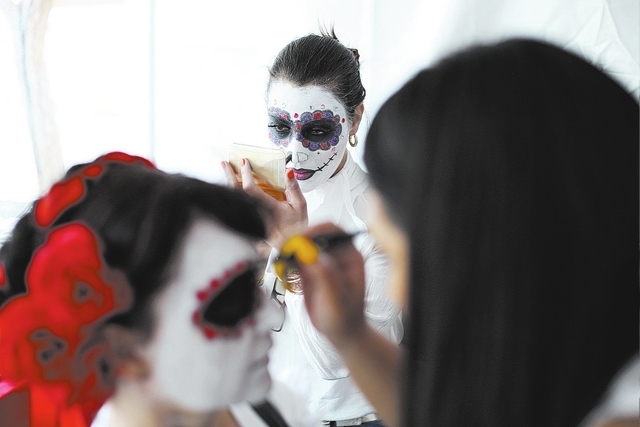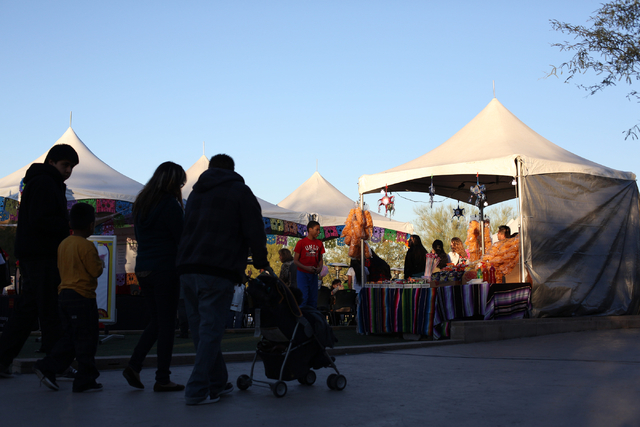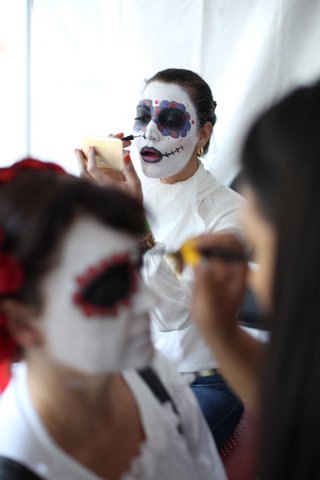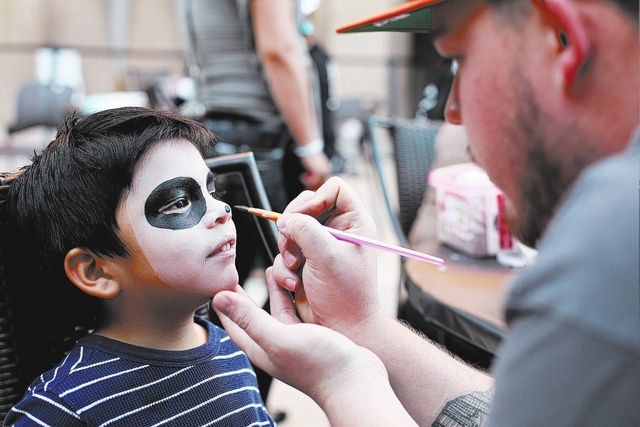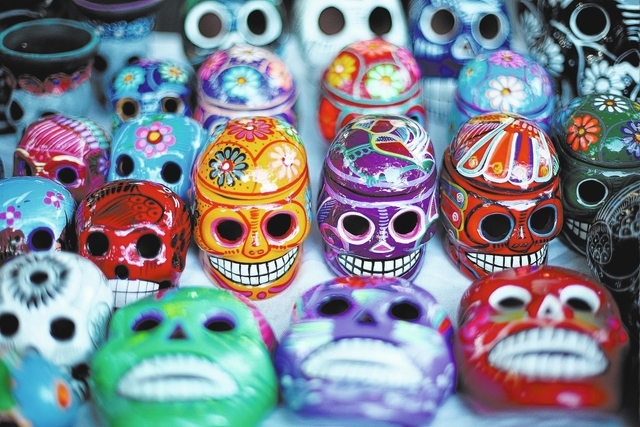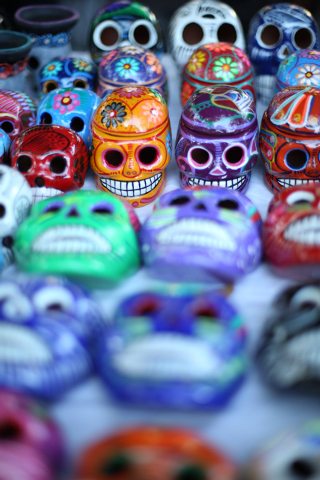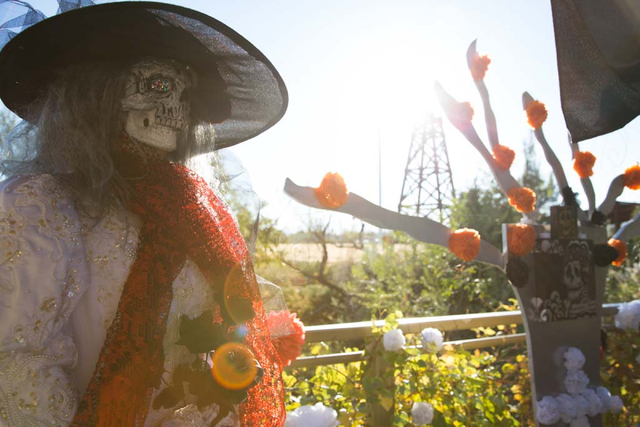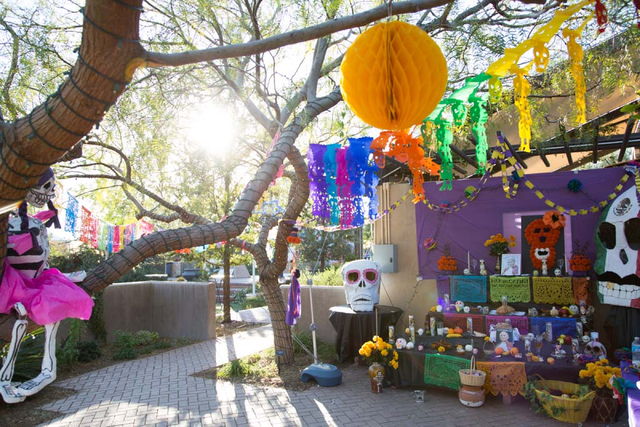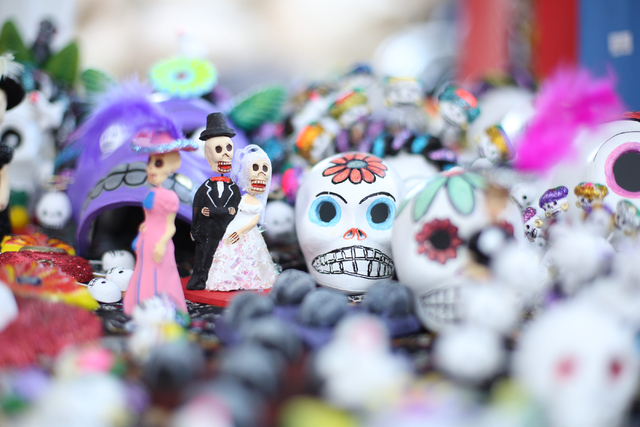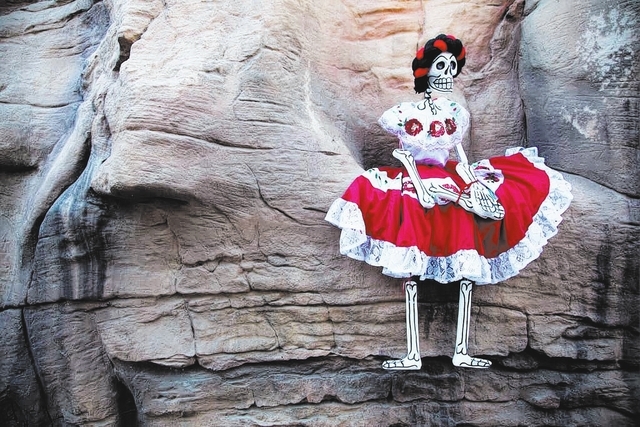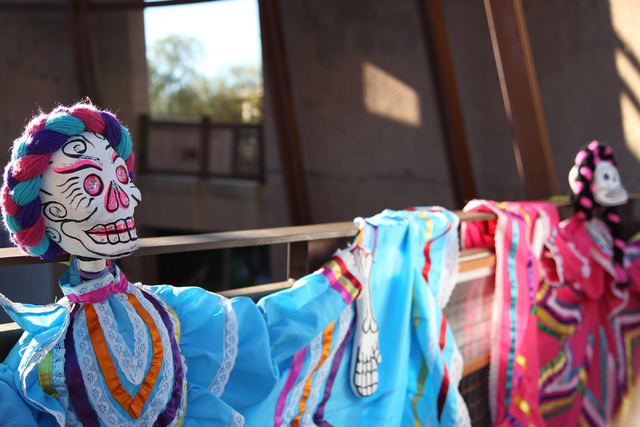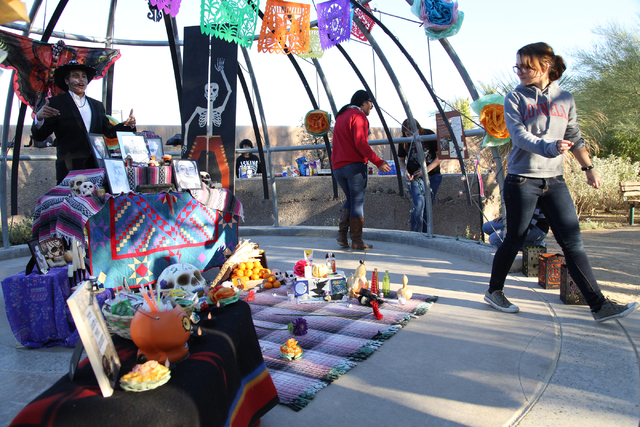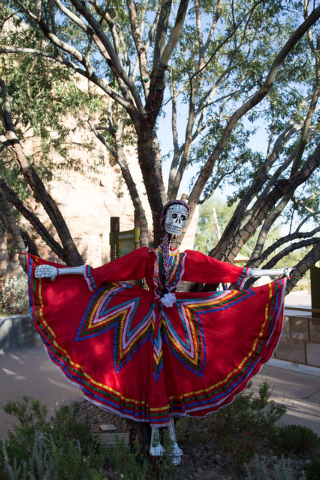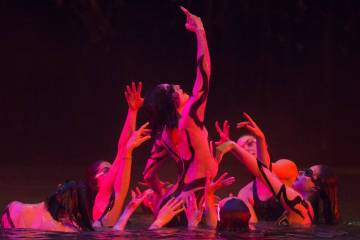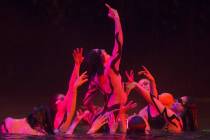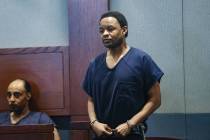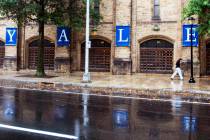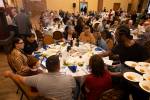Las Vegas Latinos celebrate Day of the Dead
Skeletal remains were found scattered inside the Las Vegas Springs Preserve near Meadows mall over the weekend, but no murderers were arrested and no crime was committed.
Instead it was another year and another Day of the Dead celebration, commonly known in Spanish as Dia de los Muertos.
The Latino holiday drew thousands of people to the preserve to honor family members and close friends who have died but also to listen to music, eat tacos and continue the fun in the wake of Halloween.
The skeletons came in all shapes and sizes — marble skulls with burning candles to light up hollowed-out eyes; ashtrays and paperweights with gaunt jaw bones staring back at you; life-size posters and paintings, their colors so bold the skeletal art glowed in the dark.
While most children in the Las Vegas Valley were wrapping up Halloween by unwrapping their candy, these folks, the majority of them Latino, came to check out the dozens of art booths and the shrines erected for their loved ones.
Think of it as a sort of American equivalent to Memorial Day but rooted in the religious All Saint’s Day, a Christian celebration. It occurs on Nov. 1 and Nov. 2, with the first day dedicated often to remembering the children who’ve died, the second day in honor of adults.
It’s celebrated in just about every country in Central and South America. In some countries, the citizens clean the grave sites, then leave items near the tombstones. It’s the stuff that the deceased liked when they were living, from favorite bottles of beer to favorite foods.
“It’s a celebration of life, actually, even though you’d think we were obsessed with death to look at all the skeletons,” said Manfred Yurivilca, a Peruvian who grew up in San Juan Capistrano in Southern California and was selling his artwork over the weekend at the preserve.
“If you think about it,” the 26-year-old artist added, philosophically, “you can’t have life without death, and you can’t have death without life. It goes hand in hand.”
And yet as much as Dia de los Muertos might center on remembering those who have passed on, there was still a bit of an eerie feeling among all the shrines, lit only by soft candlelight.
One honored “los angelitos,” or “little angels,” the unfortunate children who were shot dead at Sandy Hook Elementary in Connecticut. Their tiny school pictures stare back at you from behind the frames.
And then there was David Ross, a volunteer for the Metropolitan Police Department, which put up photographs of some of those officers who served Las Vegas but have since died, not in the line of duty but from illness or old age. Judging from their pictures, some were from other eras.
And from the depths of yet another shrine came this: the recorded voice of an elderly Mexican man, singing somewhere, seemingly from underground, his voice slightly muffled, not to frighten but due to outdated recording equipment.
Turns out, the recording was hidden behind one of the tombstones, which were made from cardboard. They looked real, probably because they were the product of Luisa Cortez, who owns En Sueno, a store that specializes in arts and crafts and wedding decorations in Las Vegas.
She was at the Preserve on Friday evening, proudly reigning over her shrine as visitors gawked in awe, asking her who the voice was and where was it coming from.
She said she spent weeks on the exhibit to show off a part of her heritage. She’s from the Mexican state of Nayarit, the tiniest and least populated state of the 32 states in Mexico.
“This is who we are. This is what we do every November First,” said Cortez. “We throw parties. We have fun. We remember those who lived and how they lived. That’s the way they would have wanted it. That voice singing, that’s my abuelo, my grandfather. I think he’d be proud. He’d like it if he knew that people were still listening to him.”
But it is the artwork, graphic images of skeletons, which range from comical to surreal to very real, that have upstaged the holiday itself. They have attracted a following and and created a pop culture.
There wasn’t one Halloween costume in sight at the event, but there were hundreds of children, many of them eating Mexican candy.
Theresa Lucero, 36, another art vendor, was quick to point out the difference between the back-to-back holidays.
“And when all is said and done and the day is celebrated, it’s a happy positive spin,” she said. “It’s not a negative, ‘ooooh, scary’ thing. I love the way virtually all of the Dia de los Muertos art takes the ordinary events, then strips it down to the essentials — the bones, the skeletons.”
Or, as Yurivilca put it: “It’s who we are. After we’re dead, this is what’s left: bones.”
“Or ash,” he added, quickly. “Ashes to ashes, dust to dust.”
Contact reporter Tom Ragan at tragan@reviewjournal.com or 702-224-5512.



